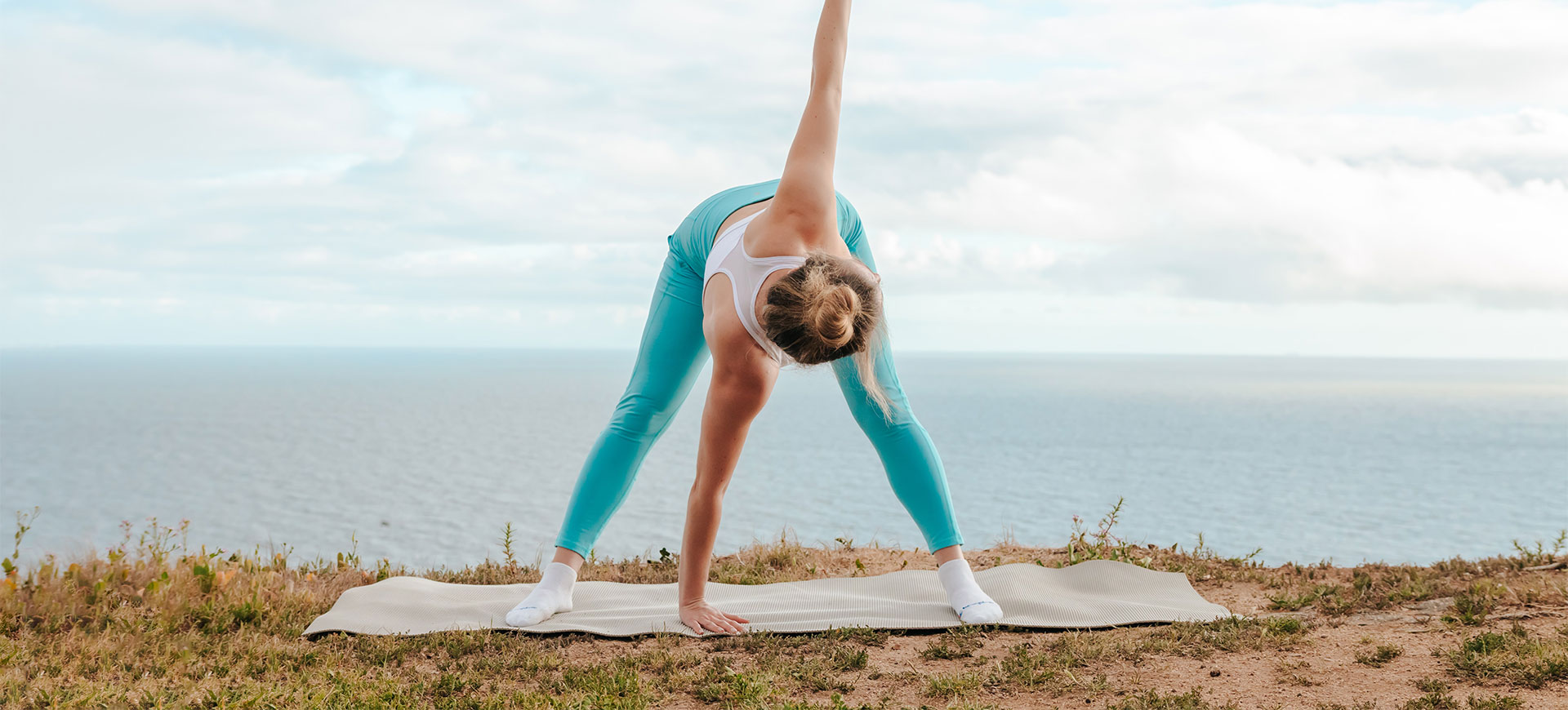
Align your Yoga Practice to the Moon Phases
Since the dawn of time, ancient populations have linked their lives to natural rhythms. So much that many developed an incredible series of fascinating rituals and ceremonies around the different cycles of birth, growth and death that are part of our cosmos.
And if there’s one natural cycle that most affects our everyday lives, that is for sure the lunar cycle. The moon in Asian traditions is often seen as the source of female energy, that calls for introspection, grounding and resetting. In fact, it’s no secret that many cultures discovered and praised the tight bond between the moon and life on earth: they literally aligned their existence to its rhythms and its shifts of energies.
This is often seen as a chance to slow down, to crawl into our sacred space, to focus inward, set new intentions, and to feel deeply connected to the cosmos.
For example, many of the oldest beliefs and religions that spread in places such as Egypt, Babylonia and India originally worshipped the moon. The yoga tradition, which has its roots in Hindu philosophy, has always been conscious of the continuous shifts of energy generated by each moon phase. The Ashtanga tradition, to name one, also has it that the yogi should line up its practice to the moon phases. You might often hear that the Ashtanga practitioner shall rest on Full Moon or New Moon days. And that is because it is known that on these days our energies are low and we need to spare them in order to find more balance.
Similarly, traditional Hatha Yoga, as the Sanskrit name itself suggests, (Ha=sun, Tha=moon) aims to balance moon and sun energies that flow in our Nadis. Even today many teachers stick to this beautiful tradition and discovered how to link their daily practice with the moon cycle. Because this is often seen as a chance to slow down, to crawl into our sacred space, to focus inward, set new intentions, and to feel deeply connected to the cosmos.
The eight phases
The lunar cycle has eight different phases, and each of them has enormous effects on our body and mind. Because, as we said, our emotions and overall energy shift according to the moon. Let’s then dive deeper into each stage and explore how we can adjust our practice to the lunar cycle.
1. New Moon
The new moon is by far the darkest night of the cycle, symbolically seen as a time of change and renewal. To fully adapt to its spirit, start by focusing on new perspectives and try to ground yourself. Find your Sankalpa, your real purpose and devote your practice to it. But now a question may arise: what kind of practice should I go for?
When the moon is at this stage you should try to keep your practice slow and mindful and incorporate grounding poses like Tadasana or the balanced alignment of a Trikonasana.
2. Waxing Crescent
When the face of a waxing crescent moon shines into our skies, we’d still focus on experimenting newness. So, you might want to open your body to new possibilities during the waxing crescent moon and add some gentle hip openings to release all those emotions that we usually carry there. Also, you can introduce some strength-building asanas into your practice, to feel motivated and uplifted. Now it’s the right time to try out some new flows, letting your Ajna chakra, your intuition guide you through the sequence and embrace the energy arisen by the waxing crescent.
3. Half Moon
This might be one of the moments when your body and mind activities are at their best. Nourish your tapas, your willpower through the deeply energising sequence of Ashtanga and focus on shapes that create heat into your body. Pranayama techniques such as Kapalabhatti or Ujjayi Breath are also ideal for this purpose.
4. Waxing Gibbous
One of the phases where we start to perceive a great energy and mood boost, thanks to dynamism generated by the pure yang nature of this Waxing Gibbous moon. Honour the masculine side of this phase with some Sun Salutations and blend in some confidence strengthening shapes like Ardha Chandrasana/Half Moon pose.

5. Full moon
The full moon is the time when we fully embrace the feminine energy typical of this mysterious, magical satellite. It’s the time where you should express yourself through creativity and cultivate genuine self-study. So, draw your attention inward and use meditation and calming pranayama like Anuloma Vyloma to gain a deeper insight into your mind.
6. Waning gibbous moon
The energy starts to lower down, introspectiveness finds its way into our minds and we might feel the urge to simply let go and start to slow down our pace. Ideal at this stage are some soft Yin poses, like Supta Baddhakonasana or Eka Pada Rajakapotasana (Pigeon Pose) that calm down our nervous system and allow us to rest.
7. Last Quarter of Moon
A feeling of pure awareness reaches its maximum peak at this stage. We should try to regulate our energies mindfully and opt for some gentle and flowy vinyasa enriched with some Cat-Cows and topped with some Skandasana/ Side squats. Also, this could be a great chance to salute this moon with a deeply pacifying Moon Salutation.
8. Waning Crescent
The cycle has finally reached its ultimate phase. Our energy is draught, depleted and our soul needs the deeply soothing effects of a nicely propped Yin practice. Use this moment to restore in reflective poses like Supta Kapotasana or enjoy the beautiful stillness of Savasana.






